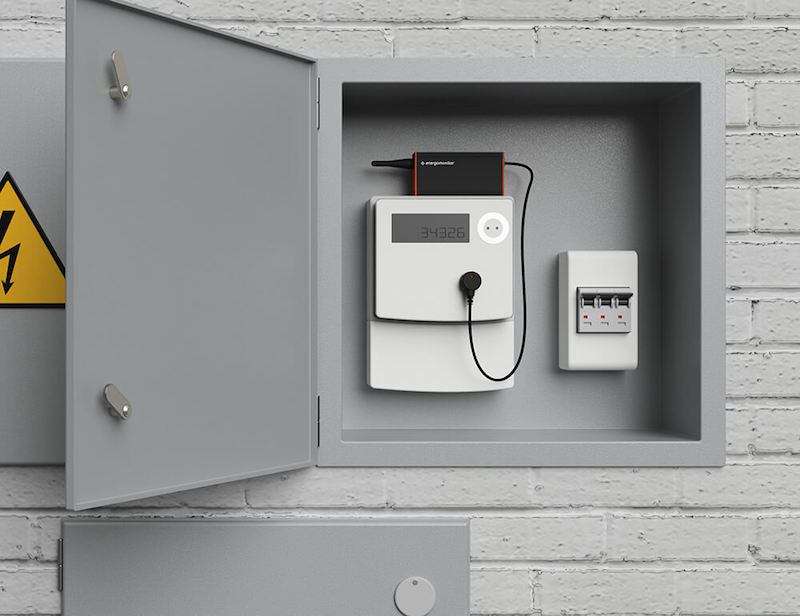Project overview
- Development of a device that uses a digital electricity meter’s optical impulse output to monitor electricity consumption or production.
- Part of Energomonitor, an IoT system for online monitoring of utility consumption.
- Developed from scratch from August to December 2015.

Problem: Why optical impulse output monitoring?
Energomonitor’s first electricity monitoring device measured power indirectly, using probes wrapped around the wires. This method worked fine for informative monitoring, but it didn’t take voltage into account, which caused significant imprecision with certain kinds of loads. As Energomonitor’s user base increased, some of our users naturally demanded a more accurate electricity monitoring device.
Key decisions
- We decided not to improve the original sensor, but to develop a brand new sensor using another source of data — the LED impulse output which can be found on all digital electricity meters (see the gallery below).
- From the very beginning, the device was meant as part of the Energomonitor ecosystem, and it was supposed to use the Energomonitor application for data collection, storage, and visualisation.
- The visual design of the sensor was not a priority as the most of the time, the device would be locked in an electrical cabinet.
Key development steps
Optical probe
- For reading the optical impulses, we developed a small plastic probe, which monitors the LED pulse output of an electricity meter and then transfers the information to the transmitter connected by a wired RJ-9 output.
- The probe is attached to the electricity meter by a small magnetic washer; the installation is entirely non-invasive.
- Values are measured every 5 seconds.
Transmitter
- The transmitter gets the data from the probe and sends it further to the Energomonitor system.
- The device is equipped with an impulse counter, which converts LED pulses to kWhs using an IPU (impulse per unit) coefficient, computing the immediate electricity consumption.
- As there is usually no power plug in the electrical cabinet and we wanted the installation to be as user-friendly as possible, we made the transmitter battery-powered.
- Due to different needs of antenna strength for different users, we built a standard SMA interface into the device, which allows the replacement of our default antenna with a stronger one if necessary.
Deployment
- Right now Optosense is being sold as the part of the Energomonitor system. It is one of the most popular devices.
- The device provides an excellent price/information value ratio, together with easy installation.
- The sensor is battery-powered, with a battery life of more than 2 years. There is no need for maintenance during its lifetime.
- The range of the radio link is up to 100 m, depending on wall shielding and electromagnetic interference.
- Data visualisation is provided by the Energomonitor application, with a possibility of export through an API.









